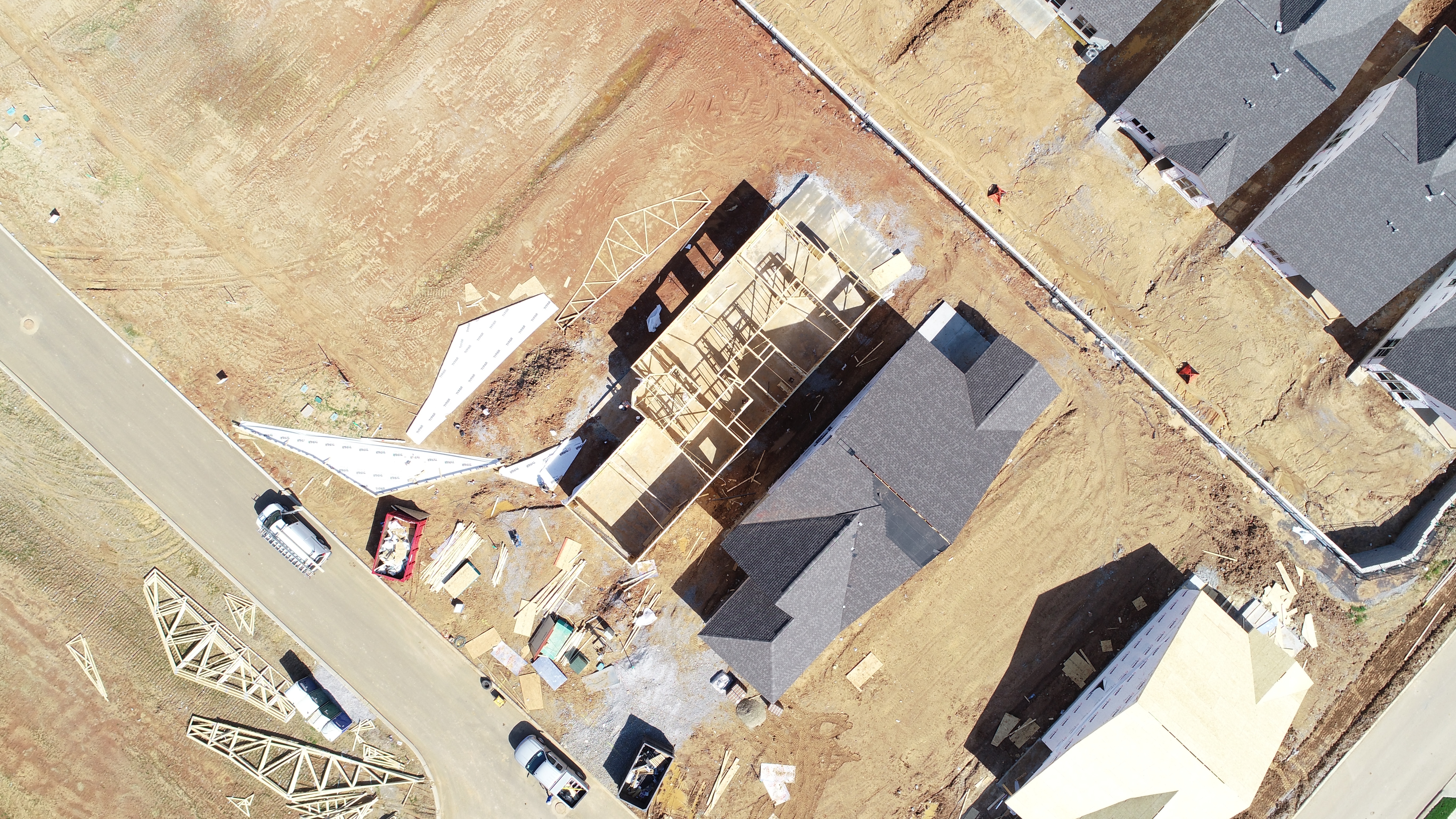
The resolution of construction disputes involves a full range of legal skills: informal negotiation, mediation, expert determination, adjudication, court appearances and arbitration.
Then there is its tangible nature – being able to point at something and say 'I acted on that,' understanding a specific detail that is often unknown to the world at large. Added to which, there is an undeniable attraction that the amounts in dispute often runs to hundreds of millions of pounds.
It was for these reasons that I decided to qualify in construction law, with a particular emphasis on disputes. While it meant all of my work is related to the industry, it was – from a legal practice perspective – more varied than other fields such as commercial litigation.
Middle East move accelerates career
Having studied law at the University of Wales, Aberystwyth and taken the Legal Practice Course at Cardiff, took up a training contract with the regional law firm Geldards LLP.
I moved to Eversheds LLP in Manchester in 2007 and, as part of standard training in the firm, obtained a Diploma in Advanced Litigation from Nottingham Trent University. I then accepted a six-month secondment to the firm's Abu Dhabi office in 2010, only to be diverted to Qatar the week before I flew out.
The diversion was so I could advise on a dispute related to the construction of a prototype, five-a-side football stadium, which the country presented to FIFA as part of its bid to host the World Cup in 2022. Two months into my secondment Qatar won the bid – and suddenly needed to build on an unimaginable scale.
Not only did it need to build the stadia themselves, but also the cities in which to host them, roads to transport the necessary materials – as well as a new port to bring them into the country – and a metro system. It was a construction professional's dream. I stayed there for almost three years, building a construction practice from scratch.
In 2013 I decided to return to the UK and joined DLA Piper LLP in Sheffield. Within a couple of months I was asked – given my experience – to return to the Middle East, so after only a year back in the UK I relocated to Dubai. I became an equity partner in 2017 and was elected to DLA Piper's International Board in 2020.
I am still in Dubai, practising international construction arbitration. As arbitration counsel the distinction between solicitor and barrister does not apply, so happily I am able to perform my own advocacy from time to time, despite not following the barrister route.
Preventing claims becoming disputes
Everyone working in construction understands that claims are part of the process. However, very few issues actually become claims in the way that people associate with lawyers. Project managers and quantity surveyors will have been putting claims together or assessing them and their value well before a potential dispute arises.
Many of those claims for additional time or cost will be agreed between the parties, or settled through negotiation meetings relying on a quantity surveyor's interpretation of the contract requirements, specification and bill of quantities, or drawing on pricing books and market information.
When those matters cannot be agreed or settled commercially and the amounts involved are high, lawyers are called in to advise. Their work often begins with an assessment of entitlement and prospects of success followed by devising a strategy for achieving the best practicable outcome, taking account of the client's commercial objectives.
Arbitration is the last resort because it is costly, time-consuming for the project team and management as well as the wait for a conclusion, and always carrying an element of uncertainty as to the outcome or enforcement.
From the moment we are instructed, we rely heavily on the project manager and quantity surveyors, as well as claims consultants if they have been engaged. We typically need them to help us understand the facts behind the matter in dispute, locate the relevant correspondence between the parties, interpret technical aspects of the specification and bills of quantities, and give us their initial view on the time and cost entitlement.
We then apply the contract, crucially in the context of the governing law. Interpretations of the same contract clauses can differ according to the jurisdiction. This process establishes whether there is an entitlement to additional time or cost or damages.
We stress-test the approaches taken by the quantity surveyors to assess additional project time and cost or quantification of damages, suggesting alternatives and identifying any additional issues that need to be considered where appropriate, to gauge our client's prospects of success if the matter were to end up in an arbitration. This allows us to guide the client on the cost and benefit of various approaches to the resolving the dispute.
Independent quantity surveyors play key roles
Quantity surveyors independent of the parties also play a part in resolution or determination. External claims consultants are often engaged in the early stages of a dispute to help formulate or assess claims. In the Middle East, this is particularly common, with the function less likely to be carried out in house.
Where external consultants are engaged for this purpose, we often work with them to present the legal element. When a formal dispute does arise, these quantity surveyors will usually be considered to have been acting in a partisan role, though, and thus unable to participate in court or arbitration proceedings.
Almost every construction arbitration requires quantity surveyors to appear as expert witnesses, with one for each party or one appointed by the tribunal, or both. This quantity surveyor must be entirely independent of the parties, because their duty is to provide opinion to the tribunal.
As lawyers, we instruct the expert witnesses: defining their scope of work, reviewing their reports and relying on their findings to advocate our client's position. Where they are instructed by the other side, we are looking for holes in their opinion and cross-examining them at the hearing.
Quantity surveyors are often engaged to determine disputes too. In places such as the UK and Australia where adjudication is common, quantity surveyors are frequently appointed as adjudicators; indeed, when I practised in the UK, RICS was the most commonly used body for nominating adjudicators.
Similarly, quantity surveyors may be called on to be the expert in expert determinations or selected as members of arbitration tribunals. The parties to a dispute should ensure the most appropriate specialists are called on, because construction disputes are highly technical in nature and go beyond lawyers' expertise.
'Almost every construction arbitration requires a quantity surveyor to appear as expert witnesses'
New-build emphasis makes market distinct
The biggest difference for me between working in the UK and the Middle East is the nature of the disputes I handle. The UK, as a mature built environment, involves many more disputes over latent defects.
The Middle East, at least in the countries of the Gulf Cooperation Council, has been all about new buildings, so the majority of disputes occur towards completion of the construction and relate to increased time and cost. There are also fewer mediations, adjudications are very rare, and once started most arbitrations run all the way to the evidential hearing.
In contrast to the UK, lawyers practising in the Gulf are used much less commonly in the negotiation of contracts – with some interesting results. However, the scale of the projects – and consequently disputes – tend to be much greater.
The Middle East has very different market dynamics to those elsewhere in the world. There remains a tendency to award contracts to the tender with the lowest price, and that price will have been kept artificially low as a result of a constant flow of new entrants to the market. Construction contracts are regularly agreed with a fixed price before the design is complete, leading to a lot of change to the design or construction after the contract is agreed.
There is no bar to including pay-when-paid clauses in contracts; nor is there any quick method of dispute resolution. As a result there is excessive pressure, and insolvency, in the supply chain. BIM and full life-cycle considerations are only just beginning to gain traction.
Of course, working in the Middle East also affords the opportunity to work on some stunning developments. Alongside energy projects and infrastructure, there are also world-first engineering feats, such as the world's largest Ferris wheel.
Ensuring progress in a changing world
Over the past five or more years, many groups have called for change to the industry in the Middle East to address some of the issues mentioned above. One example is DLA Piper's report Time for Change.
I've also supported the UAE Construction Think Tank, which was initiated by Mashreq Bank, the RICS' conversations on the same issues through its UAE Market Advisory Panel, and the British Business Group in its calls for a UAE Construction Playbook.
Notwithstanding these various initiatives, construction in the Middle East has seen relatively little change. However, the world is transforming fast, and the industry is having to respond to that globally. The demand for sustainability in all its forms is encouraging change, and with the UAE hosting COP28 later this year there is an opportunity for the Middle East to be a catalyst for change too.
Our recent report Constructing the future: Surviving and thriving in the era of disruption presents the findings of a survey in which the Middle East appears to be the most highly motivated region in terms of environmental, social and governance (ESG) concerns.
This is possibly due to the region's comparatively late engagement with these issues, and its need to catch up; but it is also commercially motivated. Some contractors in the Middle East understand that their success in securing new contracts and profitable work, as well as retaining talent, rests on satisfying the new ESG criteria. However, as the survey shows, the region still has some way to go.
The push for sustainability will inevitably mean adopting technology in a way that has thus far been patchy in the Middle East. The UAE may boast a Guinness World Record for the first 3D-printed office building, but according to our survey the Middle East is lagging behind Europe and Asia in the use of artificial intelligence in construction. Another stark example is that 70% of respondents in the Asia–Pacific and Europe regions say they regularly use BIM, compared to only 27% of respondents in the Middle East.
It would be remiss of me not to mention gender parity as well: there are far fewer women in construction in the Middle East than other parts of the world. So, with RICS' support, I am pioneering an initiative on gender balance in construction in the Middle East to effect change.

